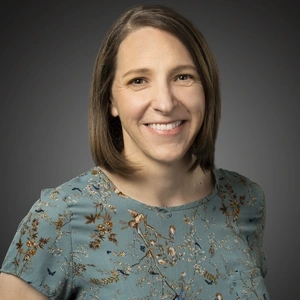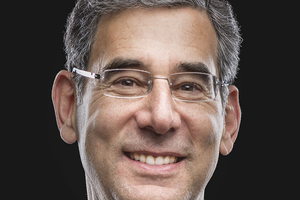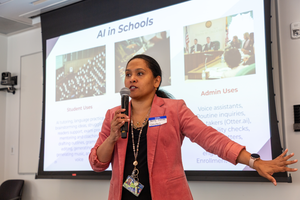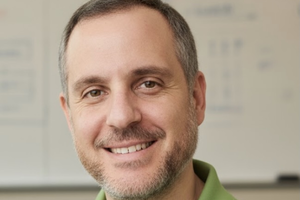Faculty Expert
For years, researchers, policy wonks, and administrators have considered education to be a straight pipeline - a child goes into preschool, progresses to kindergarten, primary school, middle and high school, and then into college where they select a major until they graduate and use that education in the workforce. If they leave the pipeline at any time, they are a “leak,” and considered a loss. But what if they drip out of one pipeline and into another? Is that still a loss? Historically, yes.
The problem with this metaphor is that it is too linear, says Penn GSE Associate Professor Rachel Baker. It doesn’t allow for alternate routes – and therefore what is holding us back isn’t the student, but rather how we’re used to looking at their entire journey.
“Describing academic progress as a pipeline through which students are propelled ignores the fact that students make decisions about their own careers and trajectories all the time. It also ignores the fact that there are multiple routes a student could take to get to a particular major or career.”
Baker and colleagues at Cornell University, University of Michigan, Texas A&M University, University of California Merced, Western Governors University, University of California Berkeley, Columbia University and Stanford University formed a research consortium to study how well colleges work.
The researchers asked: what if we stop thinking about higher education as a pipeline and think of it more like a network or pathway? In other fields like biochemistry, genomics or environmental science, viewing complex systems as pathways unlocked revolutionary insights.
Their approach and results are so ground-breaking that they are being featured in the latest issue of the prestigious peer-reviewed journal Science, which is unusual for education research.
The consortium has leveraged a standardized set of data from a range of colleges. These large datasets made it possible to use more advanced analytic techniques such as machine learning and neural nets to ask nuanced questions about educational pathways. In projects that use this model, students who change majors would not be classified as drips out of a leaky pipeline, but instead would be members of the network -- output and input -- all at once.
Baker recalled: “A student I taught at UC Irvine told me that she had wanted to be a Spanish major but couldn’t figure out which classes to take to earn the degree, so she switched to an education major instead. This one little encounter spurred a line of research for me. Curricular requirements can be super confusing, and students who lack rich informational networks and access to advisors can make suboptimal decisions because the burdens of navigating these institutions are so great.”
Using pathway analysis methods adapted from other fields, Baker and her colleagues measured the complexity of choosing a major.
“We have pretty compelling evidence that when major requirements are harder to figure out, students are less successful and more likely to take classes that don’t count toward a degree. Traditional pipeline metaphors don’t account for the many decision points that students face as they try to navigate their way to a college degree,” she explained.
Navigating an academic career is like figuring out how to get across a city; there could be many paths to get from here to there. However, with an understanding of those pathways and an ability to remove obstacles and create new paths, institutions can create more opportunities for student success. In many fields, there is a pretty narrow path to get you to and through the major, and early decisions can close off later possibilities, as though you can only take one path to the destination. But that is not universally true; paths are often more variable than tradition dictates. For example, scheduling courses differently might allow more people to enter a major. The choices are dynamic, with the knowledge and will of students being just as important as the design of curricula.
But finding or creating high-quality data sets can be hard. Baker, who is in the renowned Policy, Organizations, Leadership and Systems Division at Penn GSE, says that in the future, with even larger data sets, these new methodological tools will give educators even more insights.
“Much of the most exciting recent research is the result of data collection, standardization, and sharing across schools. Larger data sets collected over time will allow administrators, faculty, and staff to gain broader insights into student decision-making. We can already leverage common sources of data to gain actionable school-specific insights.”
If more schools collect and share their data, research groups can share the technology to analyze it. She thinks that will be especially helpful to smaller and less well-resourced schools.
“Students in community colleges often take many more classes than are required to earn a degree. Some of this is due to unnecessarily complicated curricular environments. By giving departmental administrators tools to understand how complex their requirements are, and how their complexity compares to other schools, we can reduce burdens on students and increase efficiency and success.”
Baker hopes that newer analytic methods can be harnessed to successfully navigate — and simplify — these pathways for students across the country.
Media Inquiries
Penn GSE Communications is here to help reporters connect with the education experts they need.










